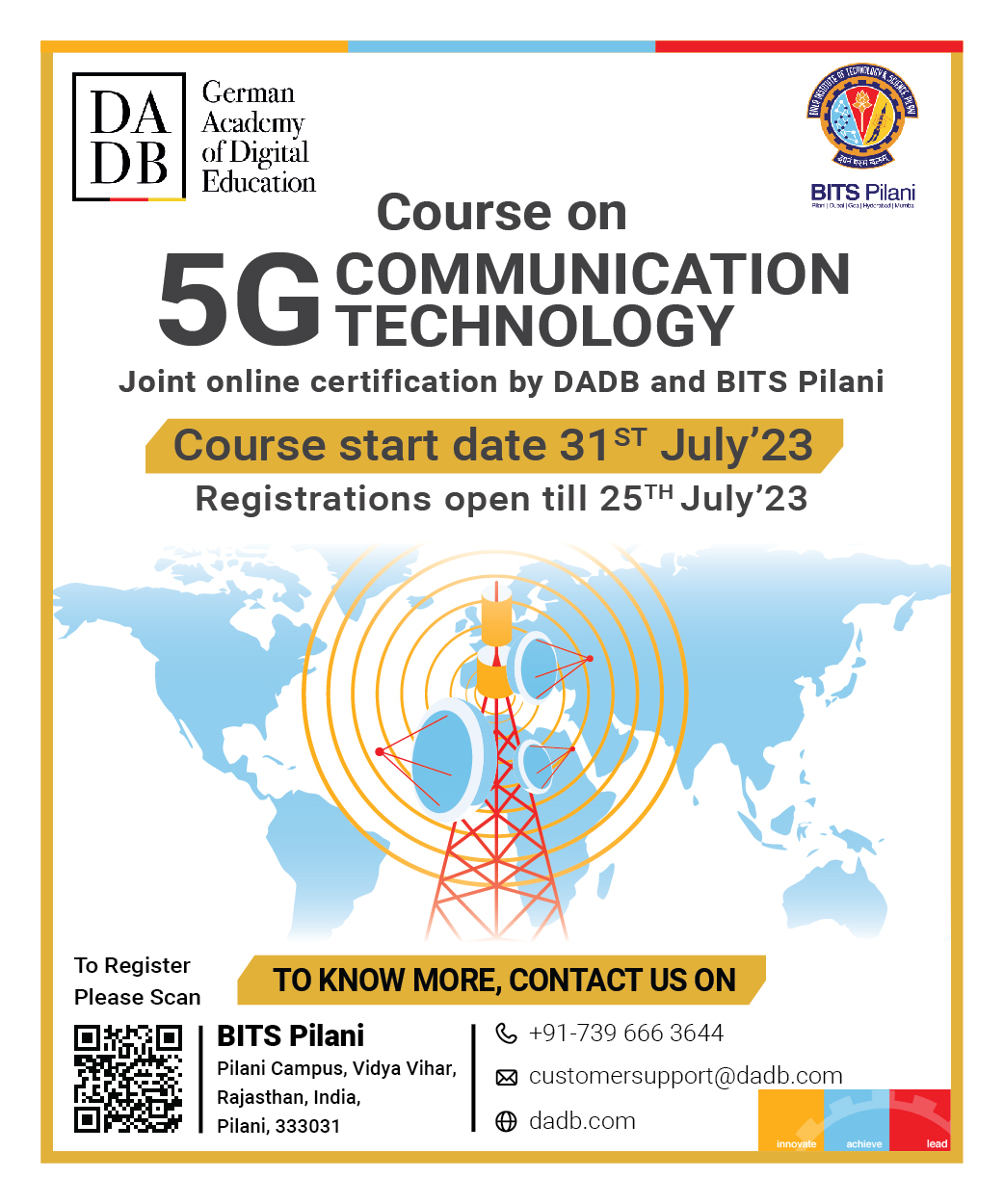– Sanjiv Verma, Vice President, Asia Pacific, Ruckus Networks, CommScope
Technological transformations and their adoption propelled by the COVID-19 pandemic have positively impacted every sector across the globe. One industry that has experienced a fundamental change is education, with fast-moving technology essentially reshaping its foundation with the introduction of e-learning. Technology changed how we learn, with online teaching replacing the traditional brick-and-mortar educational structure during the pandemic. The measure, formerly seen as a temporary solution, has now become the standard with a hybrid format. According to industry data, the Indian ed-tech market is expected to reach USD 30 billion by 2031, from USD 700-800 million in 2021.
As the world starts to normalise, innovative institutions are adopting new strategies to stay current by being flexible. A growing number of colleges and universities are undergoing a high-tech makeover using various cutting-edge technologies.
They are embracing “hybrid learning” models — integrating physical campus spaces with new digital capabilities or combining “bricks and clicks” — to free learning from the traditional constraints of space, headcount, and real-time presence.
Moreover, increasingly, they are looking to the Internet of Things (IoT) — connecting sensors, devices, cameras, collaboration tools, analytics, and digital learning platforms over a shared network infrastructure — to transform campus learning in powerful new ways. Shared and interactive learning is made possible, while ensuring the safety of the education practitioners and students, boosting productivity, offering real-time learning experiences, and allowing close supervision, etc.
Reliable, indoor, and outdoor wired and wireless communication is the foundation of a smart campus. When everyone on campus utilises the same technology infrastructure, they may communicate with one another to create experiences and efficiencies that were not previously conceivable. As a result, institutions are becoming more competitive in technology investments in order to attract students. The ways and types of digital technology used on a smart campus are almost endless.
Globally, facial recognition and biometrics are increasingly replacing traditional ID cards; smart buildings are maintaining student safety and comfort while reducing power; smart transit and parking are allowing real-time views of parking availability and traffic conditions to help students arrive in class on time. In India, universities are thinking about introducing AI-powered digital assistants to make sure that students have the right information at any time.
With students, devices and applications connecting over the same ubiquitous technology infrastructure, a smart campus can redefine lecture halls, collaborative workspaces and even learning. Here are five ways technology can help deliver a whole range of new services and experiences that elevate life on campus.
New Paradigms of Learning:
New models that suit the lifestyle of digital natives are emerging thanks to networked computing technology. Every student can quickly join a collaborative working session with constant access to audio and video conferencing tools. With access to capabilities like screen-casting and file-sharing apps from their devices (such as Google Docs, Office 365, Box, etc), multiple students get to work collaboratively on the same project without having to be in the same physical place.
Digital Portals:
Most colleges and universities are already embracing digital learning. A smart campus provides ubiquitous, rock-solid, wired, and wireless coverage everywhere, so students can easily access these portals anytime, whether they are studying in the residence hall or enjoying the sunshine on the quad.
Virtual Labs:
Students studying modern science, engineering and computer science disciplines need access to heavyweight computational resources. In the past, that meant reserving dedicated time in a lab for a project. On a smart campus, that lab doesn’t have to be a fixed location. Instead, colleges can virtually spin up cloud resources and deliver them to students wherever they are needed — and spin them back down again when they are no longer in use. However, a faster and more reliable Wi-Fi infrastructure within the campus is vital and will help to add value in students’ learning when they are working in the lab.
Record The Lecture:
Similar to how technologies in smart campuses free professors and students from the confines of physical space, they also provide greater flexibility and freedom in time. For example, when a student is absent due to illness or simply wishes to review material before an exam, all lectures can be recorded, archived, and streamed with the touch of a mouse.
Library Of the Future:
When students can research and work productively from anywhere, libraries can be reimagined as multipurpose media centres. The library can still be a place for dedicated research. But now, with conference rooms, quiet rooms, reconfigurable workspaces — even dedicated “maker” spaces — the library becomes a vibrant hub for working collaboratively and engaging with campus life.
To prospective students (yearly average student enrolment in higher education estimated at 37.4 million in India), technology runs through practically every facet of their lives — as ubiquitous as the water they drink and the air they breathe. It is time for universities to enable a more dynamic and connected digital lifestyle and give students, faculty, and researchers a campus they can’t wait to call home.

























